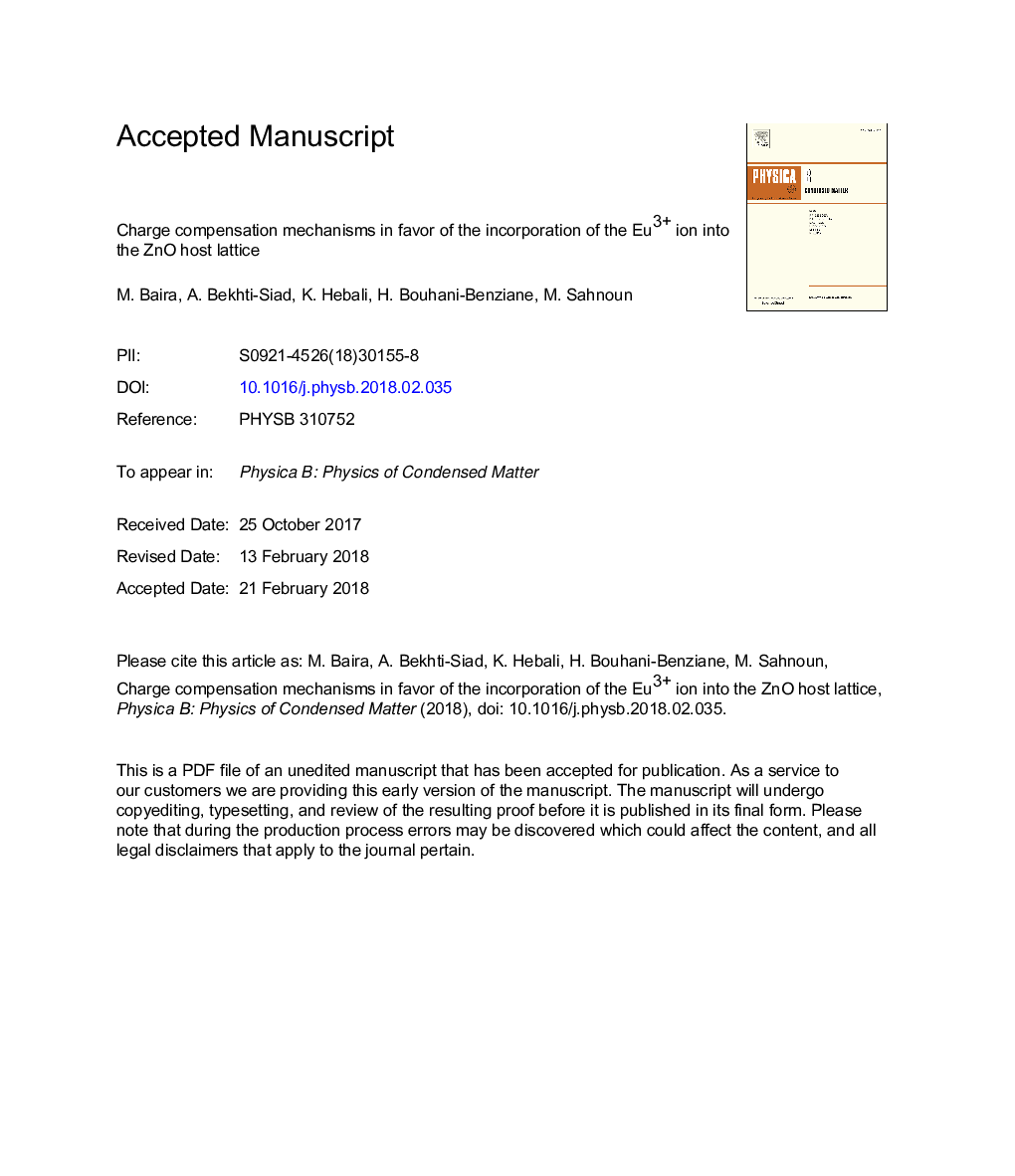| Article ID | Journal | Published Year | Pages | File Type |
|---|---|---|---|---|
| 8160924 | Physica B: Condensed Matter | 2018 | 16 Pages |
Abstract
Eu3+ doped phosphors with charge compensation are potential candidates of red emitting phosphors for lamp applications. Charge compensation improves the luminescence performance of the material. The charge compensation can most probably be achieved by three possible mechanisms: (a) two Zn2+ ions are replaced by one Eu3+ ions and one monovalent cation, 2Zn2+âEu3++ Li+, where Li+ is acting as a charge compensator; (b) the charge compensation is provided by a zinc vacancy (VZn) defects, 3Zn2+â 2Eu3++ VZn, the subscript Zn denotes an ion in a normal zinc site in the lattice; (c) two Zn2+ ions are replaced by one Eu3+ ions with the presence of interstitial oxygen (Oi), 2Zn2+â 2Eu3++ Oi. Electronic structures of the crystals corresponding to the three models are evaluated by the first-principles quantum mechanical calculations based on the density functional theory. It is found that the charge compensator defects make Eu3+ doping in ZnO energetically more favorable. They break the local symmetry around the Eu3+ ion and lead to deep states below the empty upper band, the conduction band that could facilitate intra-4f shell transitions, which can obviously improve the emission intensity of Eu3+-doped ZnO. Therefore, the effect of these defects on the host crystals electronic band states relative to the Eu3+ states is reported, since both electron transfer and electronically energy transfer processes enhance the performance of optoelectronic devices based on this material. These theoretical insights are helpful for designing rare-earth doped oxide materials with high photoluminescence (PL) performance.
Related Topics
Physical Sciences and Engineering
Physics and Astronomy
Condensed Matter Physics
Authors
M. Baira, A. Bekhti-Siad, K. Hebali, H. Bouhani-Benziane, M. Sahnoun,
